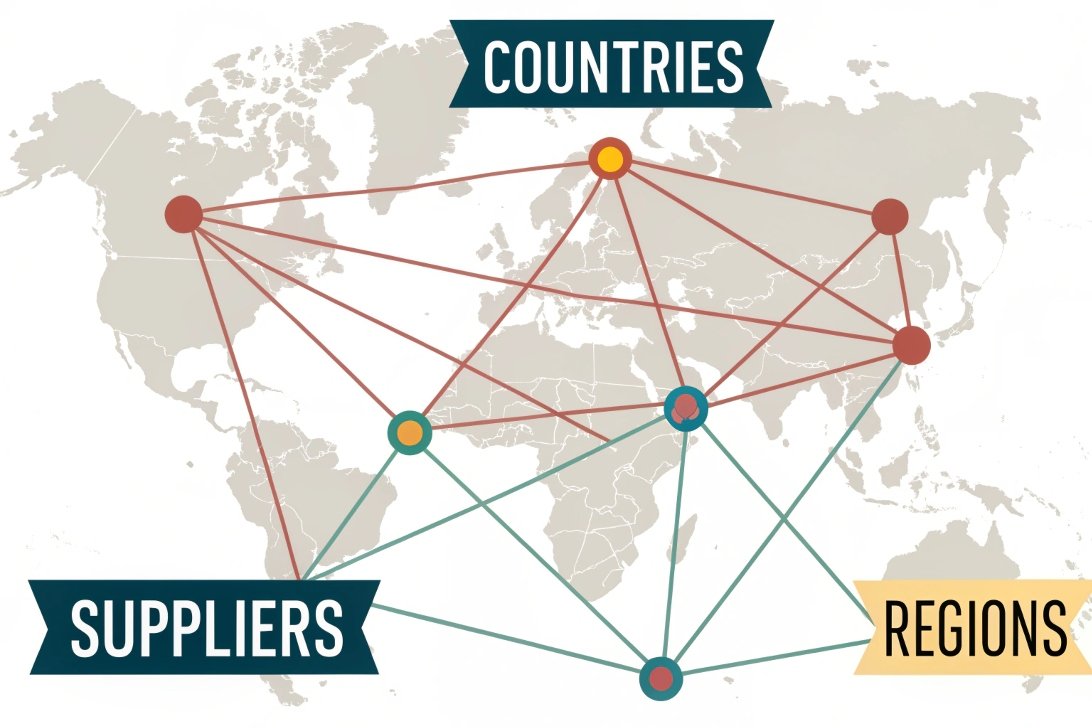
Supplier failure is one of the most critical risks in custom manufacturing. As businesses increasingly rely on suppliers for key components and parts, any failure in the supply chain can disrupt production and hurt your bottom line. Over the years, I’ve learned that minimizing this risk requires careful monitoring, planning, and strategies to address potential issues before they escalate. So, how do you protect your business from supplier failures1?
Minimizing the risk of supplier failures requires early identification of potential problems, strong contingency plans2, and diversification of your supplier base. By being proactive and strategic, you can ensure smoother operations and avoid costly disruptions.
Let’s dive deeper into the steps you can take to minimize supplier failure risks in custom manufacturing.
What Are the Early Warning Signs of Potential Supplier Failures?

Being able to identify early warning signs of supplier failure3 can save you a lot of time, money, and stress. By monitoring key indicators, you can detect problems before they escalate into bigger issues that affect your custom manufacturing process.
Key Warning Signs of Supplier Failures
| Warning Sign | What It Means for Your Custom Manufacturing Process |
|---|---|
| Late Deliveries | Consistent late deliveries may indicate issues with the supplier’s internal processes, inventory management, or capacity to meet demand. |
| Declining Quality | A decrease in quality standards could suggest problems with production processes, machinery, or a lack of attention to detail. |
| Frequent Price Increases | Sudden or unexplained price increases may signal financial instability or an attempt by the supplier to compensate for inefficiencies. |
| Poor Communication | Lack of responsiveness, delayed communication, or failure to meet deadlines often point to internal struggles, mismanagement, or a lack of focus. |
| Reduced Capacity or Workforce Issues | If your supplier faces labor shortages or reduced production capacity, it can lead to delays and quality issues. |
| Financial Instability | A supplier experiencing financial difficulties might not have the resources to maintain consistent production or invest in quality improvements. |
| Unresolved Disputes | Ongoing disputes over payments, deliveries, or quality issues can point to a deeper systemic problem that might lead to a breakdown in the relationship. |
My Experience with Early Warning Signs
In a past project, we started seeing frequent delays and quality drops from a supplier. Initially, we thought it was just a one-time issue, but as the problems continued, we realized they were a sign of financial strain and internal disorganization. By identifying these warning signs early, we were able to shift to a more reliable supplier before the issues affected our business significantly.
How Can You Build Contingency Plans to Mitigate Supplier Risks?

Building effective contingency plans ensures that you’re prepared for the unexpected. These plans allow you to quickly adapt if a supplier fails to meet their obligations, minimizing disruption to your custom manufacturing process.
Key Elements of a Contingency Plan
| Element | How It Mitigates Supplier Risks |
|---|---|
| Backup Suppliers | Identifying secondary suppliers allows you to switch quickly in case your primary supplier fails to deliver. |
| Stocking Safety Inventory | Keeping a buffer stock of critical parts ensures that you don’t run out of materials during a supply disruption. |
| Alternative Shipping Methods | Having alternative shipping routes and logistics options helps avoid delays caused by transportation issues. |
| Regular Supplier Audits | Conducting frequent audits and quality checks helps you stay on top of supplier performance and spot potential risks early. |
| Clear Service-Level Agreements (SLAs) | Setting SLAs that clearly define expectations for quality, delivery times, and penalties for non-compliance helps keep suppliers accountable. |
| Risk Assessment Plans | Periodically assessing the risks related to your suppliers, including their financial health, reputation, and track record, allows you to spot potential vulnerabilities. |
My Experience with Contingency Planning
I’ve always believed in being over-prepared when it comes to supplier risk. On one occasion, a supplier faced a sudden machinery breakdown, which delayed our order. Thankfully, we had a contingency plan that included backup suppliers and a safety stock of materials. By quickly switching to an alternative supplier, we avoided a major disruption and delivered on time. Having that plan in place gave us peace of mind and kept our operations running smoothly.
Why Should You Diversify Your Supplier Base to Reduce the Risk of Failure?

Diversifying your supplier base spreads the risk across multiple sources, reducing the impact if one supplier fails. This strategy not only minimizes risks but also gives you more flexibility and bargaining power.
Benefits of Supplier Diversification
| Benefit | How It Reduces Supplier Failure Risk |
|---|---|
| Reduced Dependency on One Supplier | By not relying on a single supplier, you reduce the risk of total supply chain disruption if one fails. |
| Increased Negotiation Power | Having multiple suppliers allows you to negotiate better terms, pricing, and lead times. |
| Greater Flexibility in Production | With diverse suppliers, you can switch or adjust production schedules more easily in response to changes in demand or capacity. |
| Minimized Impact of Local Disruptions | Supplier diversification shields you from local disruptions like natural disasters, labor strikes, or political instability. |
| Access to Different Capabilities | Different suppliers may offer specialized capabilities, which allows you to choose the best fit for specific requirements (e.g., quality, lead time, cost). |
My Approach to Supplier Diversification
In the past, I learned the hard way the importance of not putting all our eggs in one basket. After a single supplier ran into financial trouble and was unable to fulfill their order, we realized that diversifying our suppliers was essential. Now, I work with at least two or three suppliers for each critical component, ensuring we’re covered even if one of them faces issues.
Conclusion
Minimizing the risk of supplier failures in custom manufacturing requires vigilance, preparation, and smart strategies. By recognizing early warning signs, building strong contingency plans, and diversifying your supplier base, you can protect your business from disruptions and keep your production process running smoothly. In my experience, a proactive approach to supplier risk management is crucial for long-term success, helping you stay ahead of potential issues before they turn into costly problems.
Understanding strategies to prevent supplier failures can help you safeguard your manufacturing process and ensure reliability. ↩
Effective contingency plans are crucial for minimizing risks and ensuring business continuity in case of supplier issues. ↩
Identifying early warning signs can save you time and money, ensuring smoother operations in your manufacturing process. ↩

